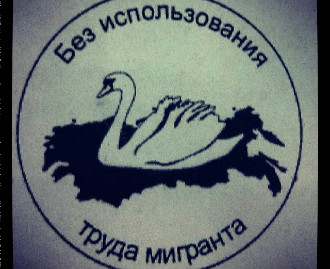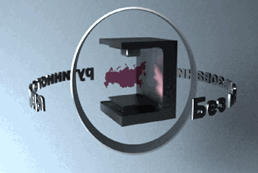3D printer should be next to the "White Swan", or about national features of trademarks

In the northern capital, in St. Petersburg, a cool initiative is proposed - to create a trademark on products “Without the use of migrant labor” with the image of a white swan . This sign will mean that the labor of migrants was not used in the production of the product. The initiative itself is very good and far-sighted. She thereby supports local producers. But this initiative has no reinforcement, without which it would remain a beautiful gesture or, even worse, would achieve a simple redistribution of workers and specialists in the same system by origin.
I will explain why the second option is even worse than the first.
Suppose consumers began to buy mainly goods with the quality mark of the White Swan, even if the product itself became more expensive. Migrants safely stopped arriving, and those who had already arrived either assimilated or returned. A problem with migrants would cease to exist in the country. But there would be other problems. The fact is that simply replacing migrant workers at work with local workers would already pose a number of problems. New workers would like to work less and get more (not all, of course, but in comparison with migrants). They, as representatives of the local population, would use the fullness of their influence to obtain additional privileges. Trade unions would develop gradually, at the very least, but protecting their own workers. And they would like more privileges, as they’re used to working either in the office, or that they have migrants subordinate. All this would lead to a rise in price of the product.
On the other hand, the process of cheapening the product and automation-robotization of labor is going on around the world. Where there are no robots, migrants work. In this regard, imported products would become cheaper, while domestic ones would rise in price. And even a patriotic consumer would not stand it and began to take cheaper products. In this situation, the country could be fined. But that would mean keeping the backlog.
On the other hand, high-tech uninhabited industries would begin to appear. They would give out a cheaper domestic product, but at the same time destroy jobs. Those. would be in conflict with the existing network of trade unions and old industries, where migrants were simply replaced by local ones, which made these industries even more expensive. But now, old productions would not want to just leave the stage. They got support in the form of a busy local population. It would have been easier for migrants to be fired and dispersed, but there are more problems with local ones.
In general, the mere replacement of migrants by locals to perform monotonous or physical labor would not solve the problem, but only exacerbate it.
But migrants are now also an obstacle to new technologies, as they offer very cheap labor, sometimes even cheaper than raising labor productivity.
Therefore, it is not enough now to put pressure on businessmen using migrants. It is necessary to put pressure on backward production, on production and services with low labor productivity.

gifok.net/image/KNGR
One of the measures of such pressure could be the introduction of the trademark “Without the use of routine labor”. The logo of this sign can be with the image of a 3D printer or a robot.
Here I already foresee questions from right and left socialists: What will happen to the workers? How to deal with unemployment?
Then I want to ask them the following question: Instead of struggling with the main trends in the economy of the 21st century, contrary to progress, creating fictitious parasitic jobs and distributing large benefits, can it be better to try to facilitate the transition of society to a new quality?
I will answer you with the words of Jeremy Rifkin, said back in the 90s about the upcoming changes that the Third Industrial Revolution is bringing:
“We are entering a new era of global markets and automated production. The path to an economy with almost no workers is clearly visible. Whether this path will lead to a safe haven or to a terrible abyss will depend on how well civilization can prepare for the post-market era that will follow the third industrial revolution. The end of the work may mean the death sentence of civilization in the form in which we know it. The end of the work may also signal the beginning of a new social transformation, the revival of the human spirit. The future is in our hands. ”
Rifkin also wrote about the end of the white-collar era and service automation.
On the one hand, it is necessary to develop the IT sector and raise creative and intellectual specialists. On the other hand, engage in various non-market projects.
And quality marks are small elements of the transformations that need to be carried out in society. They are the messengers of the new time.
